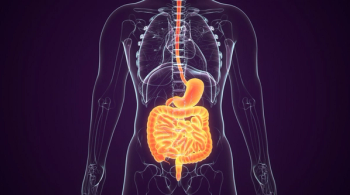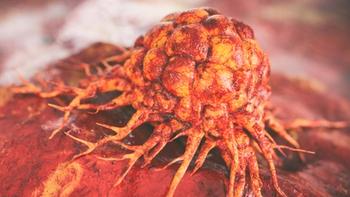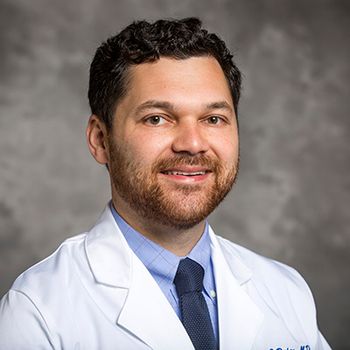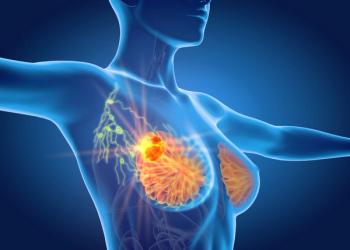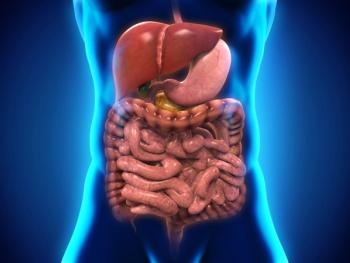
Oncology NEWS International
- Oncology NEWS International Vol 4 No 5
- Volume 4
- Issue 5
Sibling BMT Matches on the Decline
WASHINGTON--As the size of the American family declines, the number of transplants from donors other than human leukocyte antigen (HLA) identical siblings can be expected to rise sharply in coming years, John A. Hansen, MD, said at a meeting on blood and marrow transplantation, sponsored by the Leukemia Society of America.
WASHINGTON--As the size of the American family declines, the numberof transplants from donors other than human leukocyte antigen(HLA) identical siblings can be expected to rise sharply in comingyears, John A. Hansen, MD, said at a meeting on blood and marrowtransplantation, sponsored by the Leukemia Society of America.
"As families get smaller, the average American has less thana 30% chance of finding an HLA match among his or her siblings,"said Dr. Hansen, of the Fred Hutchinson Cancer Research Centerand the University of Washington.
Dr. Hansen, along with Craig W. S. Howe, MD, PhD, CEO of the NationalMarrow Donor Program (NMDP), called for an expanded pool of donorsto help provide matches for these patients.
Since the risk of acute graft-versus-host disease (GVHD) riseswith the number of incompatible HLA loci, bone marrow transplant(BMT) specialists must look for ways to overcome inevitable mismatchesand reduce the incidence and severity of GVHD.
An initial search of the NMDP registry will uncover an HLA-A,B, or DR identical match for 61% of transplant patients. At theFred Hutchinson Cancer Research Center, higher resolution testinghas shown that just 34% of patients will have at least one identicalHLA-A, B, DRB1 donor, while the rest will have a donor with aminor mismatch in one antigen. Another 11% of patients will havea potential donor with at least one major mismatch.
A close match has significant implications for BMT outcomes. Witha DRB1 match, the 5-year survival rate is 63%, Dr. Hansen said,but a mismatch offers a 5-year survival rate of only 37%. Moreover,a DRB1 mismatch results in more acute GVHD than do HLA-A or HLA-Bmismatches.
In his presentation, Dr. Howe cited an analysis of transplantsat 35 centers between 1988 and 1992. The study showed the followingprognostic factors to be statistically significant in predictinga favorable outcome: a complete serological match, male donorsex, younger donor age, shorter disease duration, younger recipientage, and higher Karnofsky score.
Dr. Hansen reviewed survival data from the Fred Hutchinson Centerfor both children and adults who received unrelated donor transplantsfor acute lymphoid leukemia (ALL) and chronic myeloid leukemia(CML). In both groups, he said, survival was primarily determinedby the stage of the disease at the time of transplant. The prognosisdeclined as the disease progressed from the chronic to the blaststages.
For children with ALL transplanted in the first or second remission,the probability of disease-free survival was 47% with a 20% likelihoodfor relapse. But only 10% of children in relapse or third remissionwere likely to survive and had a 60% chance of a further relapse.
According to Dr. Hansen, cytomegalovirus (CMV) status also playedan important role in transplant-associated mortality for patientstransplanted in chronic phase prior to 1990. Patients who wereCMV seronegative had a 65% chance of surviving 3 years, whilethose who were CMV seropositive had a 40% chance.
Since 1991, however, use of ganciclovir (Cytovene) has broughtCMV seropositive survival in CML patients up to 65%. "Gancicloviris the single most important thing to happen in BMTs for unrelateddonor transplants," he said.
Expanding the Pool
Dr. Hansen reiterated the need for an even larger pool of donorsto expand the likelihood of finding HLA matches, a point echoedby Dr. Howe and other speakers. "Between 1986 and 1994,"Dr. Howe said, "over 1.5 million Americans have volunteeredto donate marrow. While the number of DR-typed donors is rising,we must push to get more."
The program had matched 3,150 transplant donors and recipientsthrough the end of 1994, he said. Currently, 70 to 75 NMDP matchesa month reach transplant. The most common diagnoses for unrelateddonor marrow transplants are CML (34%), ALL (20%), AML (18%),and severe aplastic anemia (9%).
Successful matches are more likely to be made within ethnic groups,Dr. Howe said, and much as been learned about the distributionand representation of HLA phenotypes in the various racial/ethnicgroups through the targeted recruitment efforts of the NMDP.
The NMDP intends to do more clinical studies and increase recruitmentactivities among minorities, to increase the diversity of thedonor (and thus the recipient) populations, Dr. Howe said.
Targeted recruitment programs last year raised to 32% the proportionof new registrants who were African-Americans, Asian/Pacific Islanders,Hispanics, or Native Americans.
'Uniting for Life'
Dr. Howe said that the NMDP hopes to recruit another 35,000 African-Americansonto the national registry by 1997. Roland O. Campbell, Jr., chiefexecutive officer of Baltimore-based Uniting for Life, Inc., saidthat his organization will try to sign up the same number in thatcity alone.
Mr. Campbell's daughter, Demetria, developed chronic myelogenousleukemia and was unable to find a match or to receive an autologousBMT. After her death in 1992, her father organized Uniting forLife, which seeks to increase minority group blood, marrow, andorgan donations.
"We want to educate the public and advocate for patientsto the medical community," Mr. Campbell said. "Besidesrecruiting, we have to make sure that volunteers come back forsecond and third stage typing."
Articles in this issue
over 30 years ago
Genetic Therapy Gets NIH Patentover 30 years ago
Fusion Product Delivers Potent Toxin to Malignant Cellsover 30 years ago
Retinoic Acid May Enhance Chemo In Ovarian Ca Cellsover 30 years ago
Compounds Block ras Gene Function Compounds Block ras Gene Functionover 30 years ago
Companies Merge to Form NeXstarover 30 years ago
Antiangiogenesis Tested in Pediatric Tumorsover 30 years ago
New Director Attends Office of Alternative Medicine Advisory MeetingNewsletter
Stay up to date on recent advances in the multidisciplinary approach to cancer.


